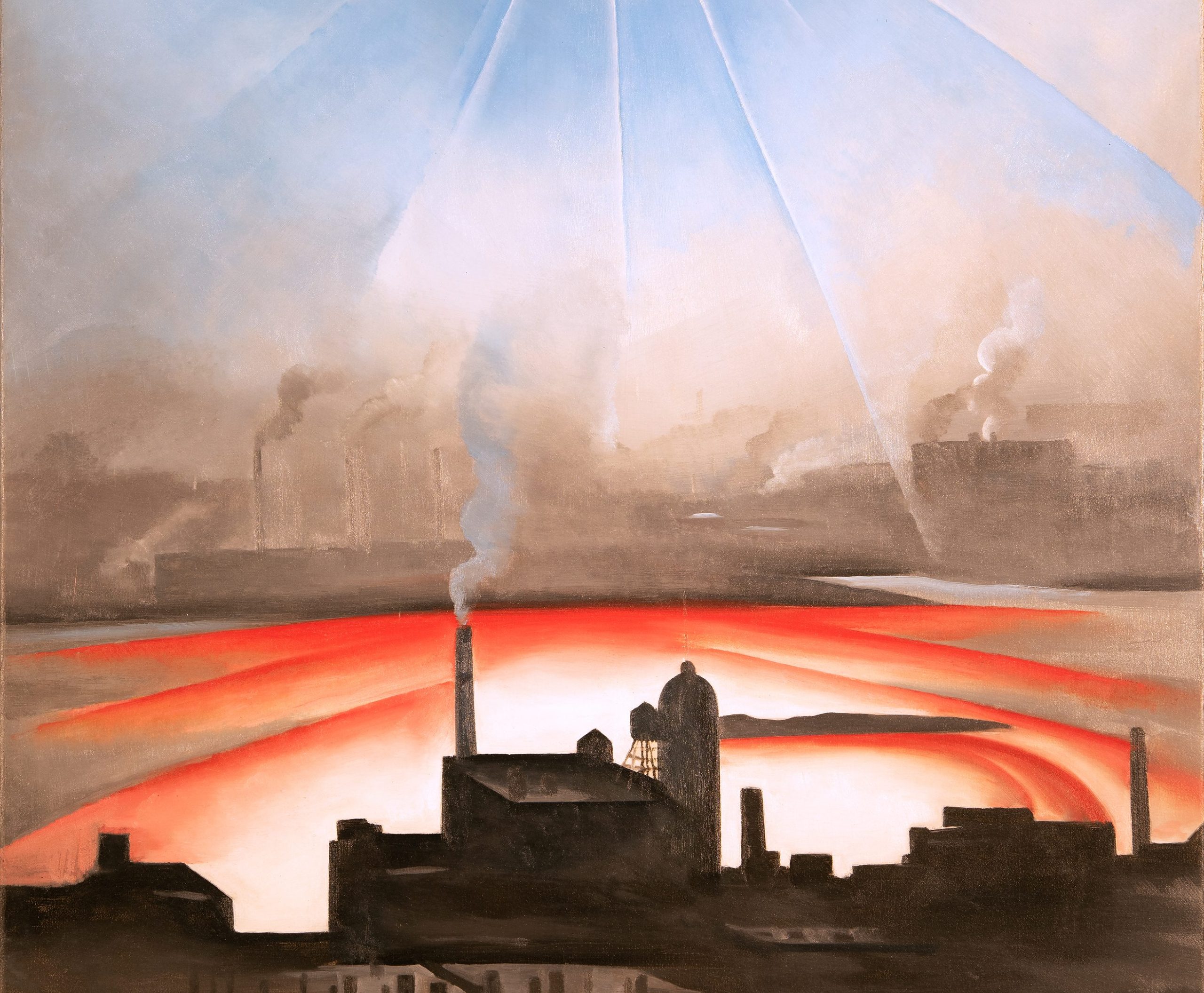Welcome to One Fine Show, where Observer highlights a recently opened exhibition at a museum outside of New York City—a place we know and love that already receives plenty of attention.
The other day at a museum gift shop I noticed a collection of flash cards designed to instill the styles of great artists into the mind of your baby, recreating certain icons with graphics so that the child would come to associate each name with familiar imagery. The one for Jean-Michel Basquiat featured a little crown on it, and the Andy Warhol one had a soup can, of course. And the one for Georgia O’Keeffe had a little cartoon cow skull.
This product is monstrous, of course, on many levels, but you might be surprised how many adults still think of art this way. A new show at the Art Institute of Chicago, “Georgia O’Keeffe: My New Yorks” seeks to correct the record by showing that there was much more to the painter than flowers and skulls. Collecting nearly 100 works from the late 1920s to the early 1930s, this is the first show to delve into her urban landscapes.
The works were made after O’Keeffe moved to the Shelton Hotel—then the tallest residential building in Manhattan—in 1924, and document a time period that saw the construction of many skyscrapers, the Chrysler and Empire State Buildings among them. As with her skulls and landscapes, O’Keeffe seems to want to draw our attention to a subject many might consider spiritually barren but is, in fact, teeming with mystery. As with her flowers, her subject grew following a certain arcane logic.
Take East River from the Shelton (East River No. 1) (1927-28), a psychedelic scene where the oozing and luminous body of
“This is what I saw out a window where I lived for a short time,” she said of Untitled (New York) (1924-26), a charcoal drawing that seems to capture the back of St. Patrick’s Cathedral as seen from the Shelton Hotel. This was the same year she married her husband Alfred Stieglitz, who was also quite skilled at finding god in the contemporary city; his photographs are on display in this show, too. He’d persuaded her to join him in New York from Texas a few years prior, and the best of O’Keeffe’s works offer a sense of how strange it must have been to see the city through her eyes.
The pair didn’t move to the southwest permanently until 1949, but this exhibition captures a part of O’Keeffe’s life that was no less beautiful.
“Georgia O’Keeffe: “My New Yorks” is on view at the Art Institute of Chicago through September 22.

